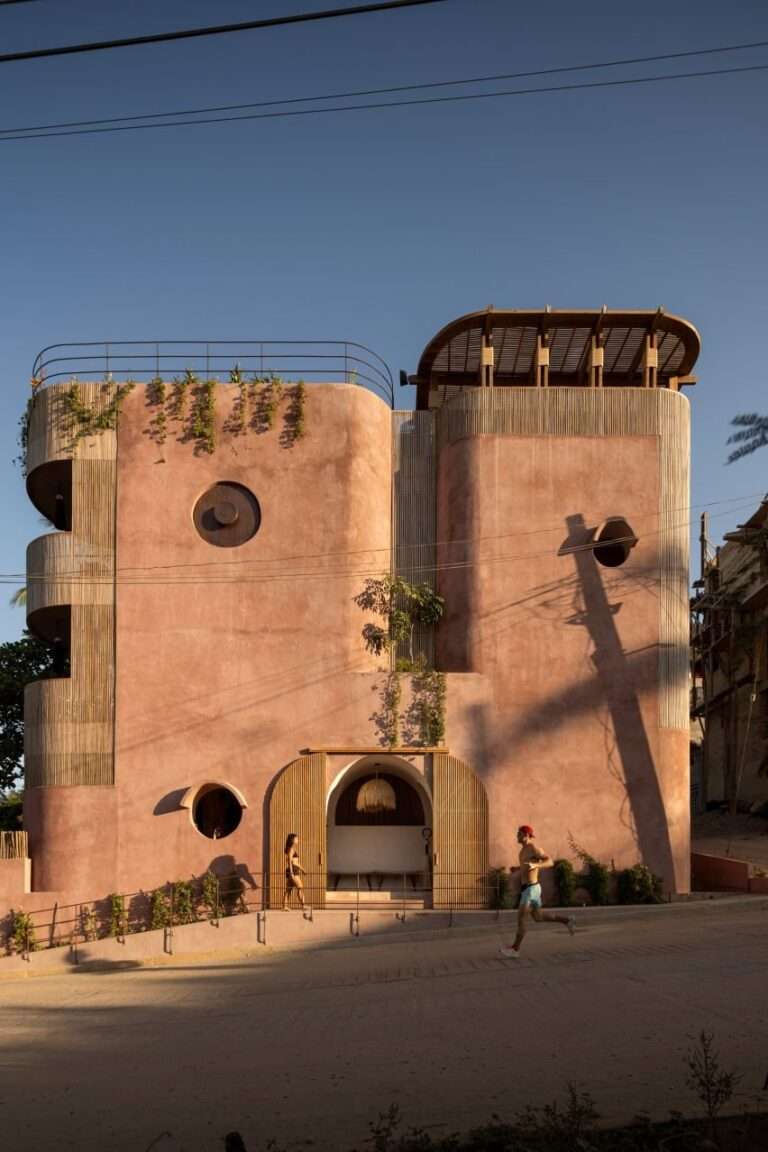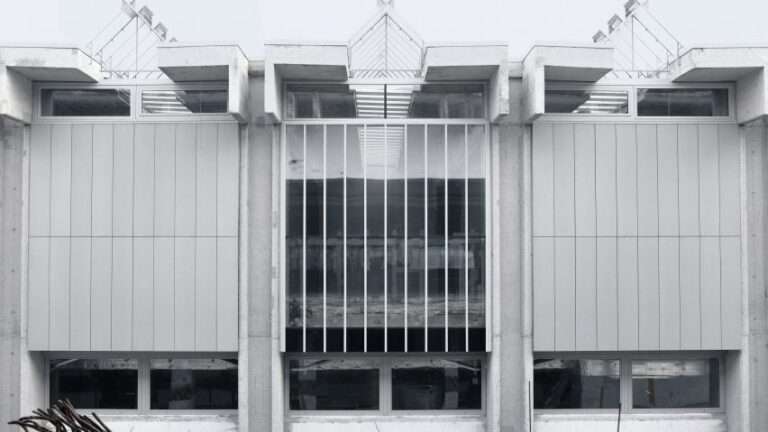
Shou Sugi Bangers is a minimalist space located in London, United Kingdom, designed by Unknown Works. Nestled within a verdant urban garden, this compact music studio emerges as a serene retreat for a notable electronic music producer, carefully crafted to stand as a tranquil enclave amidst the bustling cityscape of London. The essence of the project lies in its dedication to acoustic isolation, a necessity for the artist to compose and record without external disturbances. This objective has been meticulously realized not only through the studio’s internal design but also in its interaction with the external environment. The studio’s distinctive scalloped exterior, carved from CNC-milled Accoya wood, is more than an architectural statement.
It serves a dual purpose, enhancing the building’s acoustic properties while offering secluded spaces for the appreciation of nature’s auditory offerings, like the chirping of birds or the gentle rustle of leaves. Drawing inspiration from the rich, textural landscape of its garden setting, the studio is enveloped in a striking charred timber facade, achieved through the traditional Japanese technique of Shou Sugi Ban. This method not only imparts a deep, nuanced aesthetic but also contributes to the studio’s sensory experience by modulating the acoustic reflections within these outdoor alcoves. The design’s commitment to sonic excellence extends to its very proportions, guided by the principles of the Golden Ratio. This mathematical harmony is mirrored in the studio’s construction, featuring a ‘room within a room’ design isolated by a double door airlock, reminiscent of a submarine’s compartmentalization.
A singular, acoustically treated skylight floods the interior with natural light, enhancing the contemplative atmosphere. The interior is a testament to acoustic engineering, equipped with baffles and bass traps that fine-tune the space to eliminate reverberation, ensuring a pristine listening environment. This careful attention to detail is a result of Unknown Works’ rigorous prototyping process, aimed at extracting the utmost potential from each material and design element. The facade’s interplay of charred and smooth surfaces is strategically designed to optimize acoustic reflection, inviting occupants to engage with the soundscape fully, provided they adopt the intended seated posture.



